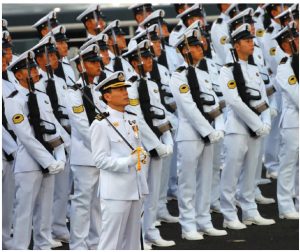
There is much in the news lately about an increase in tensions between China and Taiwan. Beijing sees Taiwan as a renegade province that must be reunited with the mainland. This has been a cornerstone of Chinese national security policy since Mao’s Communist Party’s victory over the Nationalist forces of Chiang Kai-Shek in 1949 and their subsequent withdrawal to the Island of Formosa, now Taiwan.
The change in China’s tone toward Taiwan comes as no surprise. In July 2019, China published its latest defence white paper, National Defence in the New Era, outlining its strategic guidance for the People’s Liberation Army (PLA) in what China termed a “new era.” In the document, China used unprecedented language not seen in previous defence white papers, warning that, “to solve the Taiwan question and achieve complete reunification of the country is in the fundamental interests of the Chinese nation and essential to realizing national rejuvenation. China adheres to the principles of ‘peaceful reunification,‘ and ‘one country, two systems,’ promotes peaceful development of cross-Strait relations and advances peaceful reunification of the country. China has the firm resolve and the ability to safeguard national sovereignty and territorial integrity and will never allow the secession of any part of its territory by anyone, any organization, or any political party by any means at any time. We make no promise to renounce the use of force and reserve the option of taking all necessary measures.”
In terms of its vital national security interests, Beijing warned in the same paper that, “China reserves the right to defend its overseas bases and interests and will not rule out being the first to use force to do so.”
The reunification of Taiwan and all so-called lost territories with the mainland has become the political legacy piece of Chinese President Xi Jinping. He called for reunification with Taiwan to begin in 2020 and to be completed no later than 2050. In January 2021, Xi ordered that the People’s Liberation Army (PLA) move to “full-time combat readiness” and that it must be ready to “act at any second. ” Later in January, Wu Qian, spokesman of China’s ministry of national defence, warned that “Taiwan independence” means war. In March 2021, the People’s Daily reported that Xi warned: “We should persist in using combat to guide our work; step up preparations for war … as well as developing a top-level strategic deterrent and joint forces combat system” in response to fears of Taiwanese independence. Chinese nationalism and public support for merger appears at an all-time high, hyped by the Chinese Communist Party and its state-run media.
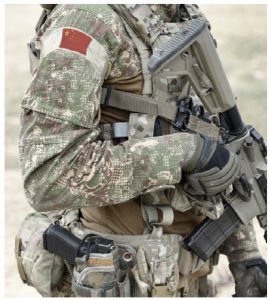
Meanwhile, Taiwan’s Kuomintang (KMT), or the Republic of China’s Nationalist Party, still maintains a hollow and unrealistic claim to the Chinese mainland. While governing President Tsai Ing-wen and her Democratic Progressive Party won a landslide victory during elections in January 2020 based on a platform of standing up to China and what amounted to independence, public opinion in Taiwan has largely been consistent since 2000 in supporting the status quo or independence. In 2020, a report by The Jamestown Foundation examined public opinion in Taiwan on reunification and independence. The report showed that more than 77 per cent of Taiwanese favoured independence under peaceful conditions, while 60 per cent support independence in the face of a Chinese attack. Support for reunification under ideal conditions was in decline while most Taiwanese supported the status quo, meaning a political solution on Beijing’s terms is unlikely.
Former U.S. president Donald Trump’s pushback at Beijing over what the American administration viewed as China’s aggressive behaviour in the region and bellicose statements aimed at its neighbours, while at the same time seeking closer ties with Taiwan, inflamed an already raw situation. China’s failure to deal with the early stages of the COVID-19 pandemic, thus putting the world at risk of a public health crisis, seemingly eroded much of Beijing’s soft-power influence. It also increased support and sympathy for Taiwan, which successfully fought off the first wave of the virus in a particularly admirable manner. China reacted with surprise and considerable frustration to the Biden administration’s furthering of the Trump policy toward China’s activities in the Indo-Pacific region, the South China Sea and Taiwan. American weapon sales to Taipei, high-level exchanges at the diplomatic level, increased bilateral trade and co-operation with the U.S. and pushes to increase Taiwan’s presence in international organizations, have tested the “One China” policy to the limit in Beijing’s mind.
If we take the Chinese government at its word, what are Beijing’s strategic options for the seizure of and reunification with Taiwan? At present, Xi has three options to impose the mainland’s will. They include, but are not limited to, a nuclear, a conventional and an unconventional or hybrid approach to its central strategic challenge.
Nuclear option
The most unlikely option would involve a Chinese nuclear strike, in some form, to conquer Taiwan, but this strategy presents high risk and potentially very high cost to Taiwan, China and others, including the U.S. China has a declared policy of “no first use” of nuclear weapons that might be tested in an all-out war with Taiwan. China possesses air, sea and land-based rocket forces to subdue Taiwan in the event of a military conflict that spins out of control. A nuclear strike in Taiwan with its major cities and high population density would be horrific, to say the least, and may very likely negate any Chinese military gains.
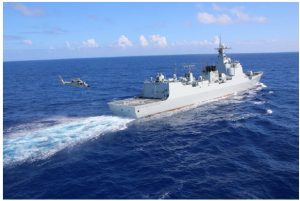
According to the International Institute of Strategic Studies’ Military Balance 2021, China’s Eastern Theatre Command maintains Rocket Base 61 with seven missile brigades, two of which are armed with nuclear-tipped, road-mobile, medium-range ballistic missiles (MRBMs), while the other five brigades are made up of small dual-capable, short-range ballistic missiles (SRBMs), and MRBMs. There are also reports that with its hypersonic glide vehicle that flies at an estimated Mach 5 to its target, China has deployed dual-capable MRBMs to the region. Taiwan does not possess nuclear weapons, although it has some short-range and cruise missiles that could play havoc with Chinese coastal cities in war and, instead, relies on the United States for nuclear deterrence of Beijing.
Chinese nuclear strategy hinges on being able to threaten U.S. bases and allies in the region with theatre-level forces while using its strategic nuclear forces to hold American cities hostage. But a Chinese nuclear strike on the island nation might escalate into a nuclear showdown with the U.S. and its British and French allies, and this is something that may give Beijing pause in time of war with Taipei. As well, Beijing does not possess ballistic missile early warning radar or satellite systems, leaving it blind to a potential nuclear counter strike until it is too late. China could employ a lower risk nuclear strategy with a nuclear warning shot at Taiwan in the form of detonating a nuclear device over Taiwan, causing an Electromagnetic Pulse (EMP) attack that would shut down unprotected infrastructure and defences on the island, leaving it vulnerable to follow-on attack. EMP plays a role in numerous Chinese doctrinal documents geared to surprise attack in war. Similarly, Beijing could float nuclear weapons into Taiwan’s major port cities on commercial ships and hold the country hostage in an attempt to force a surrender in a form of hybrid warfare, but both limited nuclear-focused strategies carry huge risk of escalating into a nuclear confrontation with the U.S., something Beijing wants to avoid at this point.
Conventional option
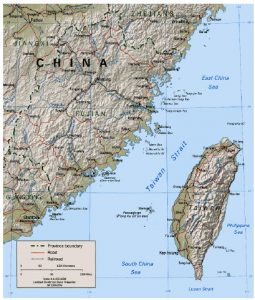
Second, China has the world’s largest military machine of more than two million troops that might be turned on Taipei at any time and with little warning. But China continues to suffer from doctrinal and organizational problems that hamper its effectiveness. The People’s Liberation Army has also not seen real combat since its border war with Vietnam in 1979 and skirmishes with India in the Himalayas. The PLA has an increasingly modern military, featuring strategic nuclear and conventional rockets and ground, sea and air forces. The Chinese Communist Party has an army of 975,000 troops to call on in defence of Chinese interests, with huge potential reserves and substantial paramilitary forces numbering about 660,000. Beijing now has the world’s largest navy of 250,000 sailors and 355 warships that it can focus on Taiwan should it choose to do so, but it is important to note that half its tonnage is in smaller ships. Its air force is 395,000 strong with a fleet of older and newer Russian-designed bombers, fighter and ground attack aircraft, with newer combat aircraft mixed in.
Currently, Beijing has 25,000 marines and 50,000 to 60,000 mechanized infantry, trained for amphibious warfare. It also has 27 special operations and 2 air assault brigades for operations against Taiwan in an invasion scenario. The island is only about 140 miles from China’s coast at its widest point and 81 miles from the mainland at its narrowest point. The PLA navy has 4 modern amphibious dock vessels, and 2 amphibious helicopter assault ships, supported by 50 older and smaller ships. The navy, to support amphibious operations against Taiwan, has 2 aircraft carriers, 1 cruiser, 32 destroyers, 49 frigates and about 125 smaller corvettes and missile craft of various capabilities. The 2 operational aircraft carriers are of modest capability with a larger third under construction, but the surface combatants are peers or near peers to their Western counterparts. China can amass as many as 500 different types of MRBMs, SRBMs and ground launched cruise missiles (GLCM) against the island nation. Forces set aside for a Taiwan operation would likely include three regiments of strategic bombers, fighter bomber and ground attack aircraft brigades and combat aircraft. Two brigades have the most advanced Chinese variants and one brigade has the J-20A Chinese stealth fighter, likely roughly equivalent to the US F-22 Raptor.
To defend against this sizable force, on paper, Taiwan and its 100 offshore islands have a 163,000-person regular military with 1.6 million reservists that are well trained and exercised regularly. The army is 88,000 strong and generally well-equipped to defend the main island from attack. Taipei’s navy has 40,000 regular and 67,000 reserve sailors and an aging fleet of 4 submarines, 26 destroyers, 22 frigates, 44 coastal defence fast attack craft and 10,000 marines. The air force has 35,000 regular air crew backed up by 90,000 reservists, with 3 squadrons of French Mirage 2000 fighter aircraft and 6 squadrons of American-upgraded frontline F-16 fighter aircraft as well as approximately 8 squadrons of older fighter planes. Taiwan has a large stock of air defence, anti-tank and conventional-tipped GLCM.
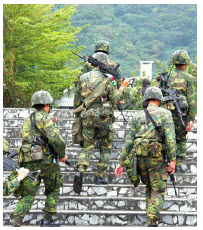
The Taiwanese military is geared to defend Taiwan and its offshore possessions until the U.S. and allied naval and military forces arrive to relieve the pressure of a Chinese assault. While Chinese capabilities on paper appear overwhelming and are growing in strength and capability, they do not ensure victory on the ground in Taiwan. While China has no allies, the U.S. has a great deal of dependable, well-trained, well-equipped and well-led allies such as Japan that would complicate Chinese ambitions for forced reunification with Taipei, should these allies be willing to intervene in a desperate fight. Taiwan is as important to Japanese security and interests in the Indo-Pacific as Japan is to U.S. interests and security in the region.
In preparation for an attack on Taiwan, Beijing would unleash cyberattacks geared to threaten and disrupt Taipei’s financial system and power grid. In a first round of attacks, Taiwanese leaders would be killed in a decapitation strike on the
Taiwanese political leadership. The Chinese battle plan rests on air power to destroy Taiwan’s air and naval defences in the opening round of hostilities using manned aircraft and conventional missiles, while its naval forces hold the U.S. at bay and land their marines and mechanized infantry trained in the amphibious mode of battle. They would be supported by air assault and PLA special forces. A major complicating factor for Beijing is that Taiwan has 11 beaches unsuitable for landings within its rugged coastal terrain, and all are largely adjacent to hardened defences and built-up urban areas, limiting the ability of an aggressor to grab a beachhead and to manoeuvre. Also, fighting in built-up areas against hardened defences is not the strong suit of [the Chinese] army, which has not really fought a war since 1979. The wisdom of the Cold War was that for effective offensive operations to succeed, an attacking force needed as many as three to five times the forces of the defender. Given simple math, it appears that China would have to deploy a million-plus troops to have any chance of real success on the ground if Taiwan fought back.
Unconventional or hybrid option
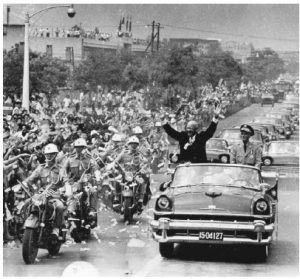
Third, China has an option similar to Russia’s political war or hybrid warfare doctrine of subverting and degrading its enemies’ capabilities as a forerunner to war and the use of conventional military power. In fact, that is the approach Beijing is currently taking towards Taipei and Taiwan. Hybrid warfare combines political, economic, informational and cyber assaults against a target nation to achieve strategic objectives while falling below the threshold of a military response. Tactics include, but are not limited to, infiltrating social media, spreading propaganda, weaponizing information and using other forms of subversion such as infiltrating political parties and front groups, foreign interference in democratic elections and espionage. More violent tactics include terrorism, assassination, coups, military backing of separatist movements/insurgency and full-scale invasions by paramilitary, mercenary and military forces as part of “hybrid warfare.” Hybrid warfare takes a whole-of-government approach to confrontation and employs both hard and soft power across domains and boundaries between peace and war.
To date, Beijing has used its shadowy maritime militia of hundreds of large- and medium-sized trawlers, crewed by PLA retirees or reservists with light weapons, to intimidate and assault its neighbours in the South China Sea and Taiwan, and to seize territory it does not own in a series of salami tactics. It sends giant dredgers to Taiwanese waters to test and wear down its coast guard and destroy the seabed and food-rich fishing grounds that it cannot access otherwise. China sends fighter planes into the Taiwanese air defence zone to wear down Taiwan’s air defences without a fight. It carries out missile tests and war games near Taiwanese offshore islands, such as the Pratas, to stress Taiwanese defences. China has deployed its Belt and Road Initiative to blackmail sovereign nation states into dropping diplomatic recognition of Taiwan in exchange for Chinese investment and infrastructure. Beijing has used economic warfare and cyberwarfare to attempt to bully Taiwan into submission. The future could see more missile tests to intimidate Taiwan. As well, we could see China attempt in many ways to interfere in Taiwanese elections and government to gain a governing party more inclined to reunification and to use any means at its disposal to do so. This political warfare or hybrid warfare continues on a daily basis like a war of attrition aimed at pressuring and wearing down Taiwan until it accedes to defeat at the hands of Beijing’s Chinese Communist Party and time is on China’s side. Russia’s “little green men” and hybrid tactics resulted in the seizure of Crimea and a good portion of the Donbass and may soon be successful in the seizure of Belarus and Moldova. Hybrid warfare is not to be underestimated.
Good men doing nothing?
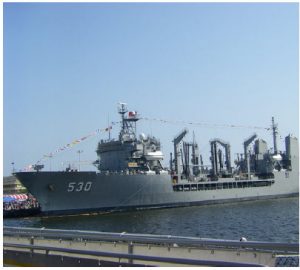
Beijing wants reunification with Taiwan on its terms and Taiwanese public opinion appears firmly in favour of maintaining the status quo as long as possible. But in the end, the majority of the country wants independence. Xi’s politics of chasing his political legacy, and Taiwan’s drift further and further away from China are unlikely to change. Xi does not want to lose face, meaning reunification by force is quickly becoming the strategic option for him to maintain his control of the Chinese Communist Party. The nuclear option is a poor, high-risk and likely high-cost path for all sides, including Taiwan, China and the United States and her Pacific allies. While China has built up considerable conventional power and modern assets, an invasion remains unlikely, with a good likelihood of failure, forcing China to give up or move to the unthinkable nuclear option. But Beijing’s political will, focus and defence spending mean that this option is not off the table for long, and time is on Beijing’s side without substantial military aid and new equipment for Taiwan from the U.S. and its allies. Making the U.S. defence commitment or guarantee to Taiwan harder and less ambiguous may not improve the West’s deterrence stance on Taiwan and may press Beijing to further desperation. Beijing has used unconventional and hybrid warfare to great effect in the South China Sea and with India in the Himalayas.
Day in and day out, the PLA continues to press and attempt to wear down Taipei with a whole-of-government hybrid or asymmetric approach to warfare, hoping the island state gives up and rolls over. And again, time without Western intervention is on Beijing’s side. In March of this year, Admiral John Aquilino, American commander of the United States Indo-Pacific, warned before the Senate Armed Services Committee during his nomination hearing that, “My opinion is this problem is much closer to us than most think.” Aquilino’s view is that within six years, without U.S. assistance and outside support, China will move to seize Taiwan. To quote Edmund Burke, “The only thing necessary for the triumph of evil is for good men to do nothing.”
Joe Varner is the author of Canada’s Asia-Pacific Security Dilemma, a former director of policy to the minister of national defence and an adjunct scholar at West Point’s Modern War Institute.





